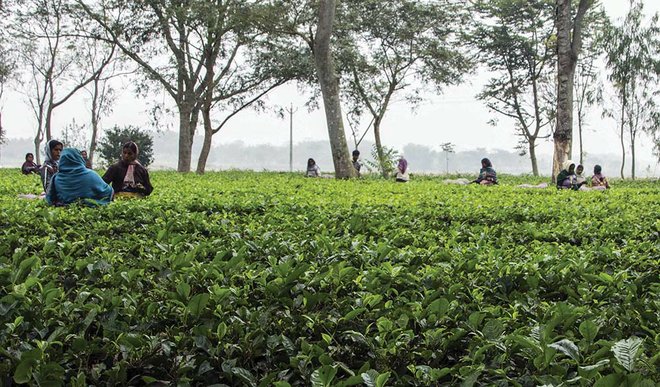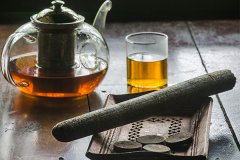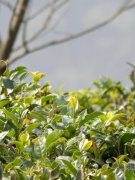The difference between Chinese black tea and Indian black tea what is the difference in the taste of Indian black tea Assam Darjeeling
The history of Indian black tea is native to northern and eastern India and has been planted on a small scale for hundreds of years. Camellia (Camellia sinensis var. Assamica) is a tea variety native to India and usually brews stronger black tea. Camellia (Camellia sinensis var.sinensis) is native to China and is usually mellow and delicate. Almost all Indian black tea, except Darjeeling, is a variety of camellia produced by Assam. Although tea has been grown in India for centuries, the British East India Company (British East India Company) produced tea on a large scale for commercial purposes for the first time during British colonial rule. Since then, India has developed into a leading force in the tea industry, producing large quantities of tea for export every year. Tea is also a popular drink in India itself, where tea consumption is almost 15 times that of coffee. Indian black tea vs. Chinese black tea most Indian black tea is made from mountain tea (camellia sinensis var. Assamica), Camellia is a tea variety native to India. Most Chinese black tea is made from camellia (camellia sinensis var. Sinensis), Camellia originated in southern China. Indian tea is more full-bodied, while Chinese tea is more mellow and delicate. A notable exception to this general rule is Darjeeling Tea, a camellia variety grown in India that uses tea trees. This makes Darjeeling black tea lighter and more subtle than other types of Indian black tea. Indian black tea is more suitable for adding milk and sweeteners, while Chinese black tea usually works best alone. Indian black tea is classified according to the tea grading system, which is classified according to the quality, size and appearance of loose tea. The common tea grades under this system include OP (orange white tea), FBOP (broken orange white tea) and FTGFOP (the best golden flower orange white tea). Generally speaking, under this system, the tea with high gold content made from the whole piece of tea is more popular. The tea dust and fan leaves commonly used to make tea bags can also be graded according to the relevant grades. Many types of Indian black tea in Indian tea-growing areas are named after the regions where they grow, including those from Assam, Darjeeling and Nierjiri.

Assam tea is native to Assam, India, where it has been grown for hundreds of years. Assam tea is even a "state drink" in Assam. Assam tea tree is one of the varieties of camellia. These teas are usually rich, bold, full-bodied, and are often mixed in strong breakfasts, such as Irish breakfast and English breakfast. Our Assam tea is the second brewing tea with FBOP grade, is a strong black tea with moderate astringency and malt and spice attention. Darjeeling tea grown in Darjeeling is a typical tea variety, which gives them a lighter and more delicate taste. Although tea originated in India, these tea trees were actually imported to India during the British colonial rule. Darjeeling is sometimes called "champagne in tea". We have Darjeeling for the second flush, grade FTGFOP1, and Monteviot Manor for the first flush, which is also FTGFOP1. The first Darjeeling Tea harvest in early spring is usually lighter and more delicate than the first Darjeeling Tea, which makes them especially suitable for connoisseurs. Although Nilgiri is not as famous as Assam or Darjeeling, Nilgiri is an up-and-coming region in the tea world. Nilgiri is located in southwestern India. These teas are often slightly milder than the rich Assam tea, but stronger than Darjeeling Tea. Like Assam tea, Nilgiri tea is also produced by the local tea variety, Camellia (camellia sinensis var. Made of assamica). Our Nilgiri tea is rich and fragrant, with honey and drupe flavors.
Important Notice :
前街咖啡 FrontStreet Coffee has moved to new addredd:
FrontStreet Coffee Address: 315,Donghua East Road,GuangZhou
Tel:020 38364473
- Prev

What is the taste of Indian Assam black tea malt-flavored Assam black tea which tea garden brand is better
Assam black tea is characterized by bright amber impregnation, malt and some astringency, 5 ounces of high caffeine in a cup, making it an ideal choice for breakfast tea. Assam comes from the Assam region of India, which is one of the largest tea growing areas in the world. It is located in northeast India, Daji.
- Next

Darjeeling Black Tea Special Turzum Tea Garden what are the taste characteristics of the summer picked black tea brand?
Built around the 1860s, Turzum Tea Garden is located on the gentle slopes of the breathtaking Mirik Valley, surrounded by protected forests of orchids and mature pine trees. Famous for producing high quality Indian tea of single origin, we have purchased fresh tea this summer from Turzum.
Related
- What effect does Italian American coffee with filter paper have? Will coffee taste better if it is put on filter paper at the bottom of the powder bowl?
- What is the color difference in coffee beans? What are the characteristics of honey processed coffee beans? Why are the anaerobically treated coffee beans uneven in color?
- How does novice Xiaobai quickly get started and make coffee? Newbies learn to make coffee by hand and share the specific steps and process process!
- Costa tea has a shelf life of 100 years?! Expert: Unable to verify
- It's a huge uproar! American milk addition was rejected by Manner employees?!
- Mocha pot coffee bean recommendations| How fine and how much powder should be used for grinding? What parameter ratios do I need to use to make milk with Mocha pot coffee?
- What are the characteristics of the world's top ten coffee beans treated with Costa Rica honey? How to make black honey kadura from Tarazhu Pilon Processing Plant taste good?
- How to make deep-roasted coffee? What grinding water temperature does authentic Jamaica Blue Mountain No. 1 coffee use to brew it well?
- Selected high-grade rose summer coffee flavor tasting guide Why Panama rose summer has the aroma of flowers and fruits
- What equipment does a novice Xiaobai need to buy to learn to make coffee? Filter cup electronic scale bean grinder manual flushing pot purchase guide

